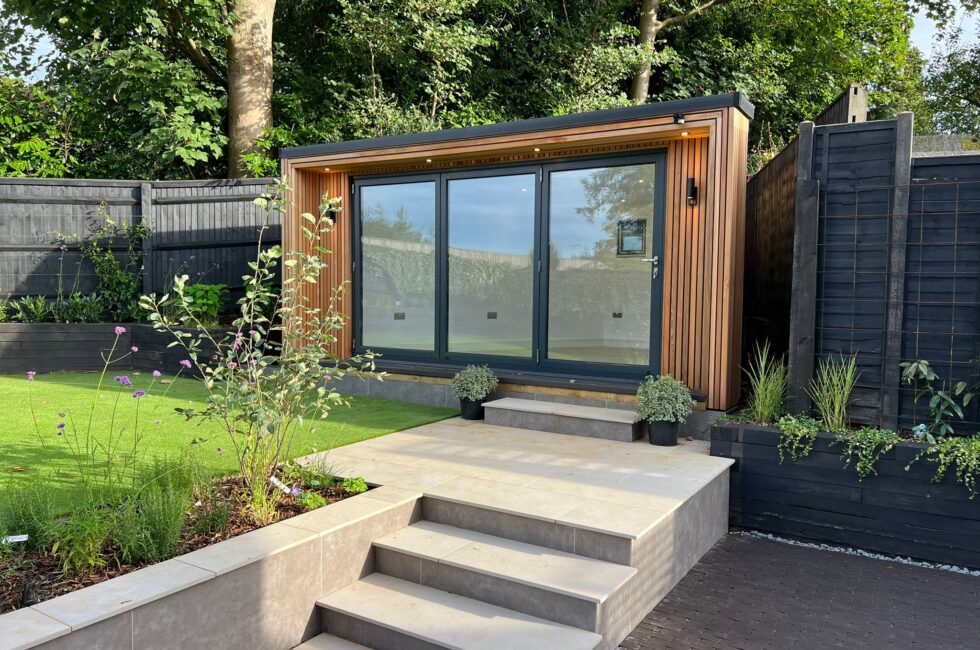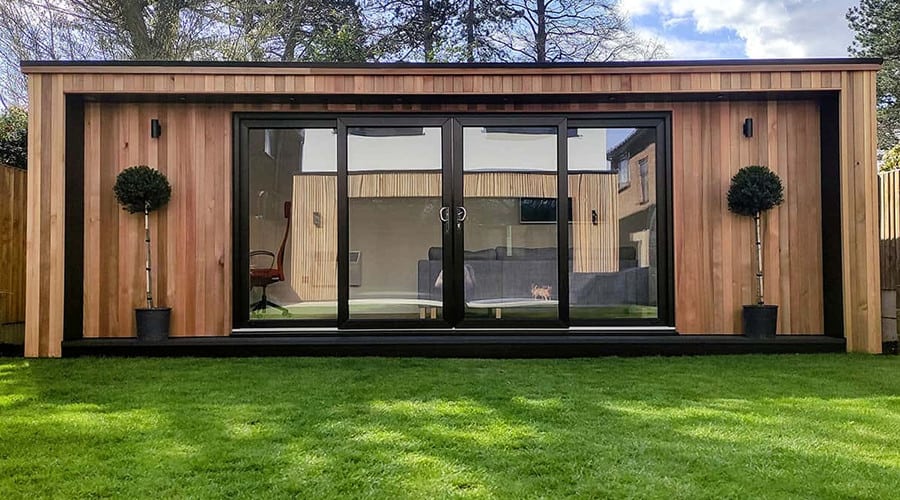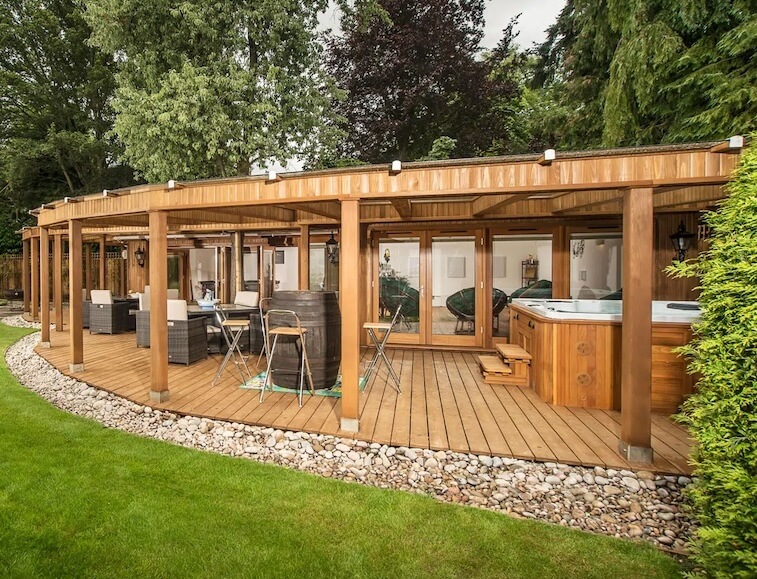Great Advice On Planning Permission On Garden Rooms
Great Advice On Planning Permission On Garden Rooms
Blog Article
What Planning Permission Is Required For Garden Rooms, Etc. With Regard To Changes Of Use?
If you're planning to build gardens, conservatories outhouses or garden offices and extensions and extensions, the "change of use" idea is vital in determining whether a planning permit is required. These are the primary factors to consider when applying for a permit that pertains to changing the use of a property change from non-residential to residential use:
Planning permission is generally required when you want to transform an existing non-residential building (such as a garage, agricultural building or garden office) into a residence or garden office. This is due to an alteration in the usage type of the building.
Garden Rooms as Living Accommodation:
A change of use is when a garden is used as a separate dwelling (e.g. an apartment or rental unit). In order to ensure that the structure is in compliance with all rules and regulations for homes the planning permit is required.
Business Use
Planning permission may be required if your intention is to utilize the garden or extension, conservatory, etc. to serve a business purpose (e.g. as an office within a home business with frequent guests as well as employees). This is because of the potential impacts on neighboring areas which includes noise, parking, and traffic.
Educational or Community Use:
To transform an existing garden building to a space for learning or other community-based events (such as classrooms or meeting rooms) Additionally, you'll need planning permission. The local authorities will evaluate the location's suitability and the impact it has on the surrounding area.
Local Impact on Infrastructure:
Planning permission is required for any changes to use that have a significant impact on the infrastructure in the local area. As part of the planning process, the local authority will assess these impacts.
Dual Use
Planning permission is required for properties that have a mixed-use (part residential, part commercial) to determine and control the various uses for the property.
Increased Footfall & Traffic
If the new use is likely to increase the amount of traffic or footfall (e.g., converting the garden into a small retail space), planning permission is required to deal with possible impacts to the zone.
Building Regulations:
Although it is not an issue of planning permission, any change in the use of a space must be governed by construction regulations that address security as well as health and energy efficiency standards. It is of particular importance to convert spaces into living spaces.
Environmental Impact:
Planning permission will be needed for changes to development that may impact the environmental. For instance, the conversion of an agricultural field into residential space. Environmental assessments might be required in connection with the application.
The Community Effect and the Amenity Effect:
Impact on community amenities and characteristics of the area are key factors to consider. If you plan to convert an outdoor space into cafes, for example you must obtain planning permission. This will ensure the plan aligns with local plans for community development and preserves the local amenities.
Areas that are not allowed to be used include:
In designated zones (such as National Parks and Areas of Outstanding Natural Beauty), there are stricter rules to ensure that the unique character of the area is preserved. Planning permission is essential in these instances.
Local Planning Policies
Local planning authorities often have very specific policies on changes of usage. They can be very different. Review these policies to determine what changes need permission and which criteria need to be fulfilled.
Planning permits are typically needed for any significant alteration in the usage or the location of a gardenroom conservatory office, outhouse, or extension. This is to ensure that the proposed purpose is compatible with the site, and is compatible with national and local policies on planning, and also addresses any potential impact on the surrounding environment and the community. An early discussion with the local authority responsible for planning is crucial to determine particular requirements and get approvals. Check out the recommended garden room building regulations for site recommendations including herts garden rooms, costco garden rooms, conservatories and garden rooms, 4m x 4m garden room, garden rooms near me, garden room vs extension, 4m x 4m garden room, out house, how to lay decking on soil, garden room conservatory and more.
What Planning Permits Are Required For Garden Rooms, Etc. In Terms Of Environmental Impact?
When planning to build garden rooms, conservatories, outhouses, garden offices, or extensions, considering the impact on the environment is essential and may determine the need for permission to plan. Here are the main environmental aspects to be considered wildlife and biodiversity
If the proposed construction will affect local wildlife habitats such as hedgerows trees, or ponds, permits for planning are required. In order to minimize and assess the impact an eco-survey might be required.
Habitats and Species that are protected
The planning permission is required if the site is home to protected species (e.g. bats, newts) or is located in or near areas of special scientific significance (e.g. Sites of Special Scientific Interest: SSSI). In order to protect them it is essential to implement specific measures.
Tree Preservation Orders:
A permit for planning is required for any proposed construction project that involves the removal or modification of trees that are protected by TPOs. The local authority can ask for a replacement plant or alternative mitigation measures.
Flood Risk and Water Management
For development in flood-prone zones or in close proximity to water bodies, planning permission is required. Assessments of flood risk (FRAs) are often required to make sure the structure doesn't increase flood risks and is able to drain properly.
Sustainable Construction Methods for Sustainable Construction
Planning permission is sometimes required to ensure the use and adoption of sustainable building materials and methods. This is a consideration for energy efficiency, insulation, and carbon emissions of the construction materials.
Surface Water Runoff and Drainage
Environmental concerns include the effect of a new structure on surface water runoff and drainage. The planning permission permits the installation of drainage systems to prevent flooding and waterlogging.
Soil Stability and Soil
If the construction is likely to impact soil quality or land stability the need for planning permission. Planning permission is required when the construction may alter soil quality or land stability.
Air Quality
For any development that might have an impact on the local air quality (such in the vicinity of industrial or major roads) approval for planning is required. This will ensure that air pollution levels are within acceptable limits, and mitigation measures are in place.
Noise Pollution:
Planning permission could be needed in the event that a garden room usage will likely to cause significant noise. The local authority will evaluate the level of noise and possible impacts on neighbors and the environment.
Waste Management:
Effective waste management in both construction and after is vital. Planning permission ensures that the construction site has recycling facilities and waste disposal that minimize the environmental impact.
Energy Efficiency
The planning permission may include energy efficiency demands, like the use of solar panels, high efficiency glazing, or green technologies. This reduces the impact of the new building on the environment.
Environmental Regulations Compliance:
Developments have to be compliant with both local and national environmental laws, for example the UK Environmental Protection Act. Planning permission guarantees that all legal requirements are met and the development is being sustainable for the environment.
The planning permission granted for gardens, conservatories, garden rooms and outhouses should also consider a wide spectrum of effects on the environment. Early consultation with the local authority is essential in understanding the needs of the proposed development and to ensure that it's in line with the applicable regulations and is environmentally responsible. Take a look at the recommended cabin heaters for more recommendations including garden room heater, garden room, conservatories and garden rooms, garden rooms near me, outhouse builders, garden office electrics, do i need planning permission for a garden room with toilet, what is a garden room, costco garden room, costco outbuildings and more.
In Terms Of Location Restrictions, What Kind Of Planning Permission Are You Required To Construct Garden Rooms?
If you're planning to build an outdoor space, a conservatory or outhouse, a extension or garden office, the location restrictions will determine if planning permission is required. These are the most important location-related criteria to consider proximity to boundaries:
Within 2 meters of the property border, any structure should not exceed 2.5 meters. If the height exceeds the limit, planning permission is required.
Front of the property:
The permitted development right does not usually allow for extensions or buildings facing forward.
Right-hand side of property:
Side extensions are required to conform to certain size and height restrictions. They are usually required to get planning approval if they go further than the existing side walls of the house.
The rear of the property
The dimensions and height of garden extensions and rear rooms to the rear of the property are restricted. If the extension exceeds permitted limits, a planning permit will be needed.
Designated Zones
More stringent controls are in place for conservation areas, Areas of Outstanding Natural Beauty, National Parks and World Heritage Sites. Planning permission is required for any new construction, no matter how large.
Listed Buildings
The listed buildings are subject to strict guidelines. Planning permission and listed-building permits are typically required to construct the new structure or to alter an existing one, no matter the area it is located within the property.
Green Belt Land:
In order to preserve open spaces, it's extremely difficult to construct on greenbelts. The majority of times the construction or alteration that is significant requires a permit.
Areas prone to flooding:
If the property is located in a flood-prone area, additional regulations apply to ensure that the construction does not exacerbate flooding risks. It may be necessary to get planning permission or a flood assessment.
Urban vs. Rural Settings
In urban areas, the rules differ from those found in rural areas. Rural homes may have a more relaxed approach to the size and position of outbuildings. But this could be different.
Highways & Public Rights of Way
Planning permission is required if the structure is near highways, public rights-of-way or roadways to ensure that it does not hinder safety, views, or access.
Shared Ownership and Leasehold Land
If you own a property which are part or leasehold or share ownership schemes, you may need to seek additional permissions or from the entity managing or freeholder or planning permission according to the local laws.
In the vicinity of other structures:
The proposed structure could require planning approval to avoid adverse impact on neighboring land or buildings.
For advice regarding the specifics of your property's situation and location, it's best to talk to the local planning authority. The regulations can differ greatly based on local policies, and ensuring that you comply with all applicable limitations is vital to avoid legal problems and fines. Take a look at the recommended garden room extension costs for website examples including garden room heater, garden outhouses, garden office electrics, Tring garden rooms, ground screws vs concrete base, Tring garden rooms, insulated garden rooms, garden room vs extension, garden office hertfordshire, garden outhouse and more.